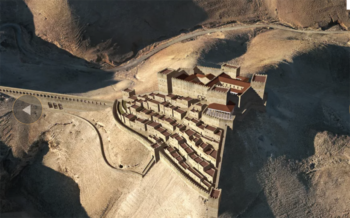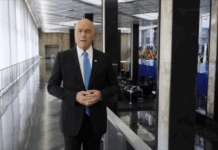By Mark Ellis —

An archaeologist says he has identified the dance floor where John the Baptist was sentenced to death around A.D. 29, according to a report by Live Science.
The Bible and the ancient historian Josephus both describe how King Herod Antipas, a son of King Herod, had John the Baptist executed. Josephus stated that the execution took place at Machaerus, a fort near the Dead Sea in present-day Jordan.
In the Bible’s account, King Herod Antipas was set to marry a woman named Herodias, both of whom had been divorced — and John the Baptist’s public condemnation of the marriage aroused the fury of the king and his bride.
At Herod Antipas’ birthday party, Herodias’ daughter Salome performed a dance that so delighted King Herod that he promised her anything she wanted as a reward. Salome, goaded on by Herodias, asked for the head of John the Baptist. The king was reluctant to accede to her request, but he kept his word and had John the Baptist’s head brought to Salome on a platter.
A courtyard uncovered at Machaerus is the probable location for Salome’s dance before King Herod, according to Győző Vörös, director of a project called Machaerus Excavations and Surveys, as described in the book Holy Land Archaeology on Either Side.

The courtyard, Vörös said, has a semicircular-shaped niche that is probably the remains of the throne where King Herod sat.

Archaeologists discovered the courtyard in 1980, but they didn’t recognize the niche as being part of Herod Antipas’ throne until now, Vörös wrote in the article. The presence of the throne next to the courtyard strengthens his conclusions about the dance floor, Vörös wrote.

courtyard of the fort (Győző Vörös)
One historical footnote of interest to students of the Bible is that the foster-brother of King Herod Antipas, Manaen, became a follower of Jesus and is mentioned in Acts 13.
“Now in the church that was at Antioch there were certain prophets and teachers: Barnabas, Simeon who was called Niger, Lucius of Cyrene, Manaen who had been brought up with Herod the tetrarch, and Saul.” (Acts 13:1)
Manaen grew up in King Herod’s ignominious family and the Lord saw fit to rescue him and call him into ministry in the early church.



